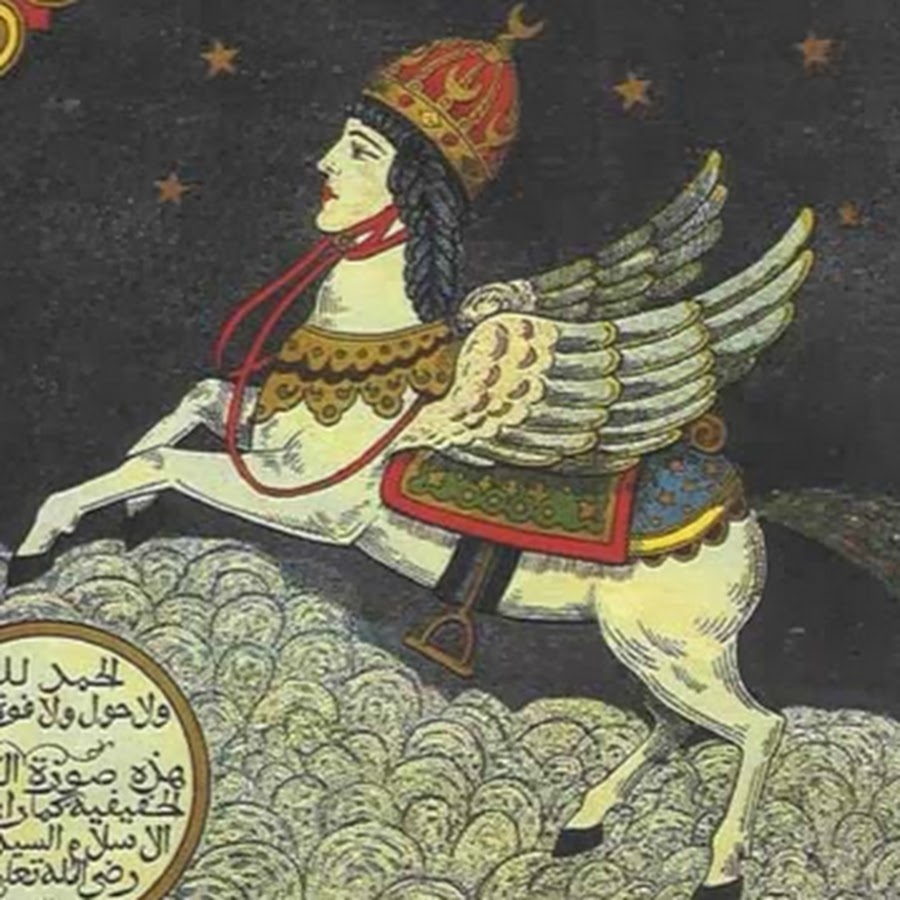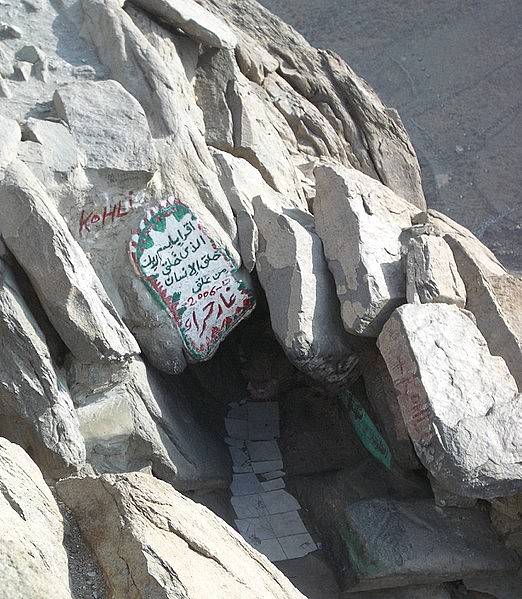
The story of the ‘cave of Ḥirā’ is featured in full in Zoroastrian texts. Books and rock inscriptions left by its followers say that Zoroaster took refuge in the mountain of Sāblān for a certain period of time contemplating the meaning of good and evil, until the angel of revelation came to him and addressed him
BY AHMAD ASID
THE CURIOUS THING is that the first to believe in Zoroaster was his wife Hvōvī and his cousin Medyomah, and that his people persecuted him and rejected his call, so he was forced to leave his town and wander through the land to spread his religion.
As for what the jurists tell in the story of the Mi‘rāj and the Prophet Muḥammad’s ascent to the seventh heaven on the back of an animal with a human head, the Islamic account has retained the Persian Zoroastrian word Būrāq, which means ‘the fastest in the universe. The ascent of the Prophet Muḥammad through the heavens in the company of the angel Jibrā’īl, the angel of revelation, is hardly different from the story of the ascent of the Prophet Zoroaster which has the same form, along with his meeting with the angel of revelation and the archangel Vohu Manah, who conveyed him to heaven and placed him at the side of the throne of the divinity Ahura Mazda.
The similarity is curious in that the story of the Ascent to Heaven in the Zoroastrian religion is found in the book Ardā Wirāz nāmag which dates from after the era of Zoroaster, and not in the original sacred text called the Avesta. This is just as it is in Islam, where the story of the Mi‘rāj is not mentioned in the Qur’ān but found in the Ṣaḥīḥ al-Bukhārī, more than 200 years after the Qur’ān.
It is therefore a matter of religious ideas and stories that were widely circulated and popular in the ancient Eastern world, ideas that were transmitted to different countries and cultures acquiring a special character in each of them, but nevertheless retaining the same ideas and narratives.
It is therefore a matter of religious ideas and stories that were widely circulated and popular in the ancient Eastern world
It is the right of any Muslim to believe in the Isrā’ and the Mi‘rāj as related by the ancient Muslim commentators. This is an indisputable right of principle, but it is equally the right of any researcher into the history of religions to say objectively that the story of the Isrā’ conflicts with historical data, and that the story of the Mi‘rāj to heaven appears in religions prior to Islam, transmitted verbatim by the ancient Muslim commentators, and attributed to the Prophet through hadiths developed in the Umayyad and Abbasid eras, in addition to other tales composed in that era for various purposes and interests.
Instead of being annoyed by this discussion, shaykhs, jurists and preachers must prove, if they can, that what in this story they call the ‘Al-Aqsa Mosque’ already existed in Jerusalem at the beginning of the Islamic call and prior to the arrival of Islam there, and prove that there is no relationship, for example, between the Zoroastrian story and the story of the Mi‘rāj, so that the issue will become scientifically, not doctrinally, treated and the tools of thought and scientific research used as opposed to methods of incitement, intimidation, symbolic violence and absurd legal prosecutions.
No doubt the coming period will introduce much new data that will force us to reconsider many old religious ideas
It is therefore strange that the persecution of the journalist Ibrahim Issa in Egypt during the past year and the intention to prosecute him, all took place because of a subject in which he is in entire agreement with one of the former shaykhs of Al-Azhar, Imam Muḥammad Muṣṭafā al-Marāghī (ob. 1945) who served as the Shaykh of Al-Azhar in the thirties and forties, who had previously stressed the following things courageously and with all rationality:
- that the physical ascent of the body to the upper world above certain layers is impossible, because air is non-existent, and the living physical body cannot live or breathe there;
- that the Isrā’ and the Mi‘rāj are considered to be miracles, and a miracle is only granted when people are gathered together in order that the Prophet can demonstrate his validity before the public, as happened with all previous prophets – while that events of what happened (according to the commentators) took place at night while people were sleeping, and was what Al-Marāghī vainly wrote off as ‘unworthy of the wisdom of the wise’;
- that the hadith of the Mi‘rāj included illogical matters such as the splitting open of the Prophet’s belly and its purification by Zamzam water of moral matters such as negative feelings, polytheism, and so on – while what is washed with water is such things as eye infections, but this can have no effect on cleansing the heart of false doctrines;
- that riding on the back of Burāq in this curious way is not justified, for if God had wanted to lift up His Prophet towards Him, He would have done so by means of His power;
- that to say that God imposed fifty prayers on the Prophet’s nation, and that the Prophet subsequently ‘negotiated’ them down to five, is an impermissible act against the divine Self, because it requires annulling the ruling before it was implemented, according to the Shaykh;
- that to talk about the prophets as if they were bodily alive in heaven is unpalatable because life in the upper world, according to the Shaykh, is spiritual not physical, and thus the Shaykh defended the ‘spiritual Mi‘rāj’ or ‘moral Mi‘rāj’, and argued that if the jurists wished to consider the Isrā’ and the Mi‘rāj as honouring the Prophet and glorifying him, the ascent should be considered something symbolic in the form of a vision, for example, and not a material event.
This is what Imam al-Marāghī said and no one prosecuted him at the time, nor did anyone consider him an ‘infidel’, while today the shaykhs of backwardness want to try Ibrahim Issa and other intellectuals and meticulous researchers in this third decade of the third millennium.[i] It clearly indicates just serious is the decline plaguingEgypt and the countries of the region, from the widespread wave of extremism and ignorance.

Suggested Reading
The early history of Islam and the scarcity of material artefacts
No doubt the coming period will introduce much new data that will force us to reconsider many old religious ideas, and the debate will turn from an arena of trials, threats, intimidation and abuse, to an arena of thought and precise scientific research where the survival of ideas and beliefs will be for the fittest.
[i] The case was internationally reported. See the report in the UK newspaper The Independent here. (Ed.)
See Part One of this essay here

